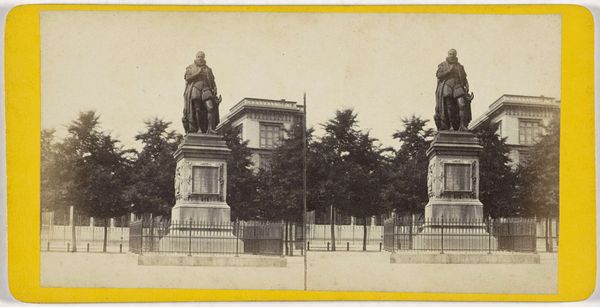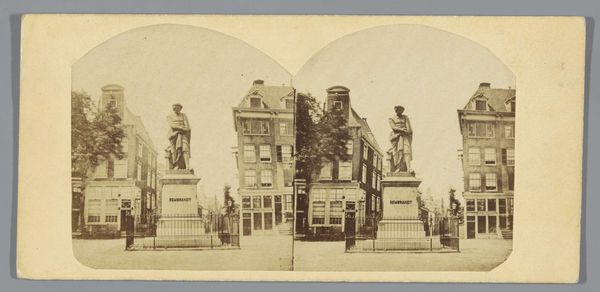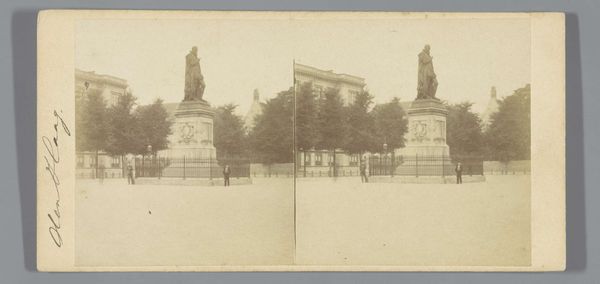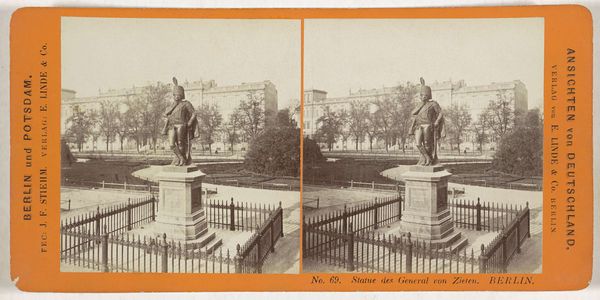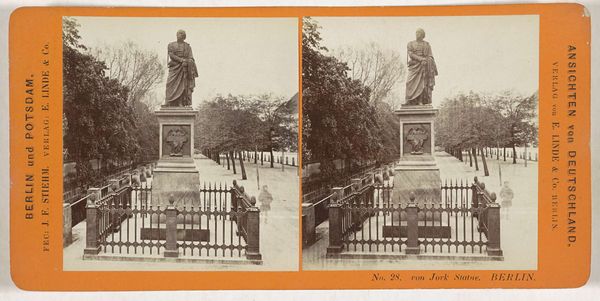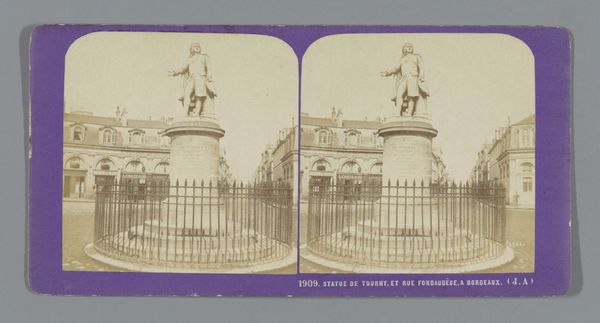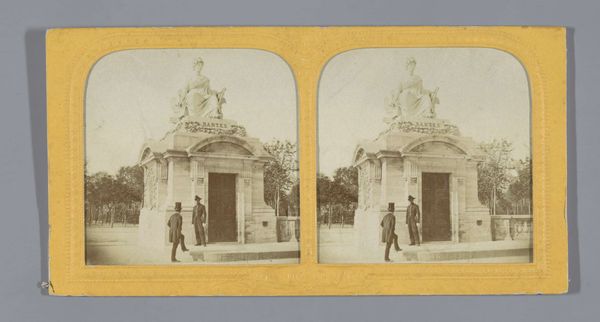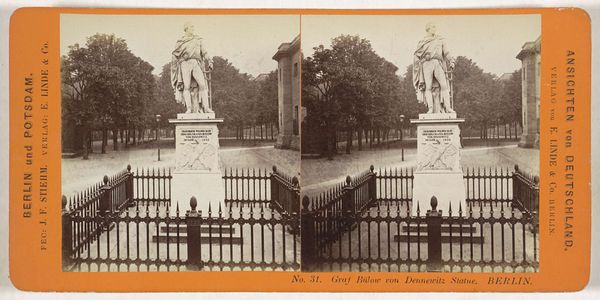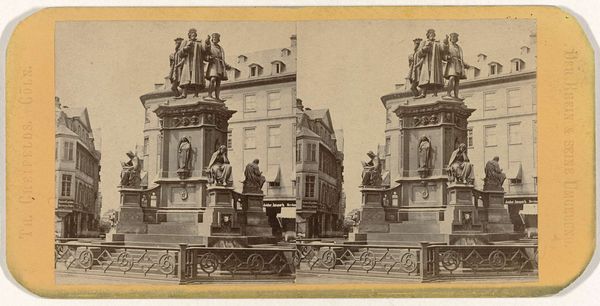
Gezicht op het Zeughaus vanaf het Bebelplatz in Berlijn, op de voorgrond standbeelden van Ludwig Yorck von Wartenburg, Gebhard Leberecht von Blücher en August Neidhardt von Gneisenau 1861 - 1862
0:00
0:00
Dimensions: height 85 mm, width 176 mm
Copyright: Rijks Museum: Open Domain
Editor: This albumen print from the 1860s presents a cityscape, specifically a view of the Zeughaus in Berlin with statues in the foreground. It feels quite formal and structured, and I am immediately curious about the choice to produce it in stereoscopic format. What do you see in this piece? Curator: I see a document of production. Consider albumen prints themselves: a highly technical process reliant on specific materials, labor, and a controlled environment. It represents a convergence of chemistry, manufacturing, and artistic vision. The stereoscopic format underscores this further: creating an immersive three-dimensional experience was, at the time, cutting-edge technological display enabled by those precise material processes. Editor: So, the subject of the photo – the architecture and statues – are almost secondary to the process of creating the image itself? Curator: Not secondary, but integrated. These statues and this grand building—all symbols of power and state—become commodities. This albumen print reproduces those symbols and delivers them to consumers within their own homes to experience through novel, materially intensive display technologies, effectively democratizing these displays of authority. What implications do you think this had for German society in the mid-19th century? Editor: That's interesting. So, the very act of reproducing these symbols on such a scale flattens those historic figures into… product? And this photography medium democratizes the images, challenging traditional power structures of accessing art. Curator: Exactly! Reflecting on this print through that lens certainly shifts our understanding of it. The act of production and dissemination reshapes the original subjects. Editor: I hadn't thought about photography this way before; the way you framed its inherent materiality provides new context! Curator: Indeed; thinking about art in terms of labor, material, and circulation is essential.
Comments
No comments
Be the first to comment and join the conversation on the ultimate creative platform.

